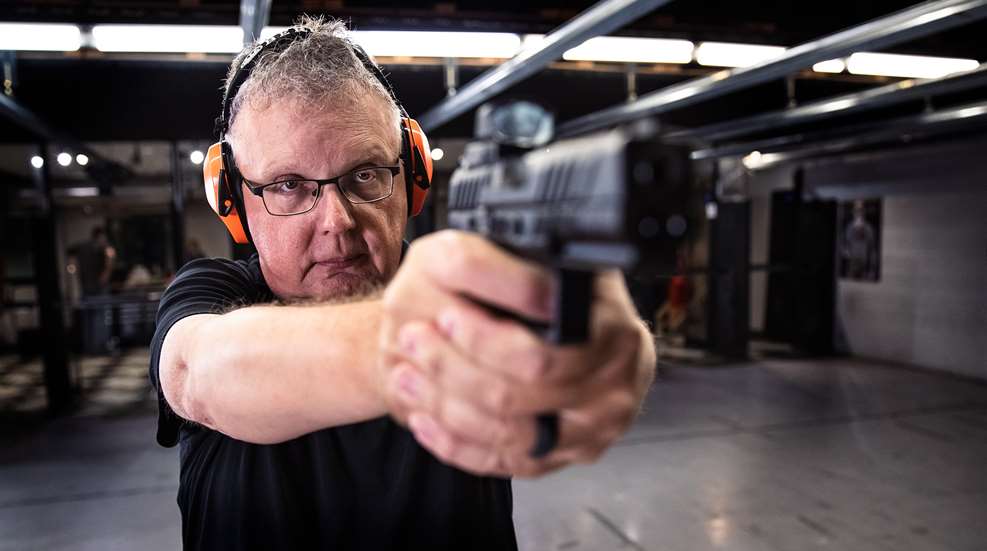
Success is a byproduct of consistency. Whether practicing good situational awareness, defensive tactics or further developing your shooting skills, the secret to getting any better at what you’re doing is to build consistency. How can you build enough consistency to enjoy success? By building good habits.
The 2010 performance director of Great Britain’s professional cycling Team Sky coined the term “aggregation of marginal gains,’ a training approach postulating that each good habit builds upon the last and compounds to produce an exponential return, or in more common terminology, success.
Martial arts masters teach that repetition is the mother of all skills. Most believe that practice makes perfect whereas the true story is that practice makes permanent. You end up with what you repeat. Getting better at something isn’t just putting a few hours a week into your training but should include a measurable improvement at each step along your journey toward success.
In his landmark book “Atomic Habits: An Easy and Proven way to Build Good Habits and Break Bad Ones,” acclaimed author James Clear states that “The goal of any sport is to finish with the best score, but it would be ridiculous to spend the whole game staring at the scoreboard. The only way to win is to get better each day. In the words of three-time Super Bowl winner Bill Walsh ‘The score takes care of itself,’ The same is true for other areas of life. If you want better results, then forget about setting goals.”
Goals are good for setting a direction but focus on how you get there instead. If your goal is to improve your shooting performance, then isolate one or two elements to work on developing small but measurable gains. If you’ve elected to work on your transitions (measured shot times between targets), then isolate the sub-components of that shooting process. Work each of these to a point of observable improvement.
Visual acuity is a necessity. Per United States Army Special Forces retired Delta operator and competitive shooter, Mike Pannone, “You can only shoot as fast as you can visually process.” You can’t improve upon what you can’t see. Remaining aware of the individual sub-components of the transition process is paramount to improving that process.
According to Master competitive shooter Travis McCamish, the transition shooting process can be broken down to its sub-particulate elements of reset, snap, float and press.
Paramount to rapid transitions, and fast-paced round placement, is to reset the trigger immediately. Grandmasters like multiple world-champion Rob Leatham recommend building the very good habit of resetting the trigger faster than pressing out the shot.
Pinning the trigger to the rear of the trigger guard buys you nothing and in fact costs you exponentially in terms of speed. The faster you move to reset, the faster your overall time. You should be in the process of completing your reset when your muzzle rises during recoil.
Next is to snap the muzzle from your current target (T1) to the very outside edged of your next target (T2). It’s important to move as quickly as you can physically maintain muzzle discipline. Waste no additional time or motion here either. You should also be tracking your sights during this process.
During the snap process it’s far better to under travel than to overtravel. If you overtravel the muzzle past the visual center of T2 from T1 you then must stop muzzle movement, retrace your bypass trajectory and reposition the muzzle reoriented to the target, all of which takes a considerable amount of wasted time.
Building the good habit of choosing to err on the side of under travel as opposed to overtravel, builds solid and repeatable shooting consistency and saves you time.
The very next and final part of the transition process is to control the muzzle from T1 to the outermost edge of T2 allowing you to “float it in.” Tapping the bakes on the way into T2 from T1 at about the outside edge of T2 does at least two things for you. First it initiates greater control of your muzzle stop at the visual center of T2 and second allows you to time the completion of the press beginning at the edged of T2 and ending at the center of T2.
You can break each of these down to their sub-particulate level one at a time – reset, snap, float, press. After you have mastered each isolated sub-component, your next task is to work on linking them together.
Founder of the Rogers Reactive Shooting School, Bill Rogers, advocates mastering the isolated sub-components and then working on what he calls “the in between” that is, the tying together of reset, snap and float. You may want to start with a reset-snap drill, then run a snap-float drill, then run an exercise of combining both drills to build consistency and repeatability between your newly-linked isolated subcomponents.
Pistol craft is a martial art. Like any other martial art, you want to first build technique consistency first. Don’t try to “go fast.” Speed is nothing more than efficiency of movement and a byproduct of repeatable correct repetitions.
Motivated by your desire to shoot better, you engage both your passion and discipline to build good habits. The road to building good habits is to isolate the sub-components, work these until they are ironed out and then link them all together observing your improvement each step of the way.




































